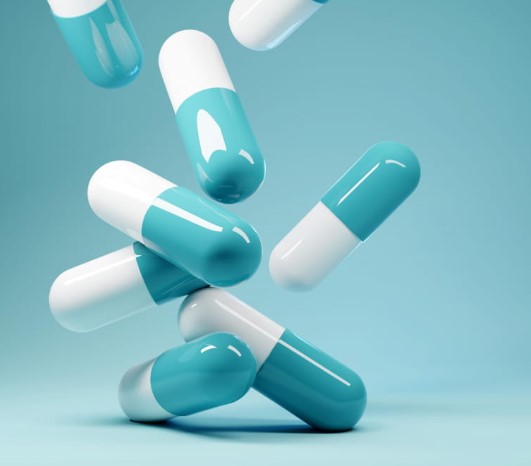7 Rules When Taking Antibiotics

Photo is illustrative in nature. From open sources.
Antibiotics are medicines that are used to fight infections caused by bacteria. They work by killing or stopping the growth of bacteria, which allows the body to fight infection more effectively.
There are several types of antibiotics that are used for different types of infections. For example, penicillin is used to treat respiratory tract infections, tetracycline is used to treat skin infections, and chloramphenicol is used to treat typhoid and other infections.
However, when using antibiotics, certain rules must be observed:
1. Take antibiotics only as prescribed by your doctor and follow his recommendations. Do not change the dosage or duration of use without consulting your doctor.
2. Take antibiotics exactly on schedule and throughout the course of treatment, even if you feel better. This will help prevent recurrence of the infection and the development of bacterial resistance.
3. Do not take antibiotics that have been prescribed to another person, even if you have similar symptoms. Each case of infection is unique and may require different types of antibiotics.
4. Store antibiotics according to storage instructions. Do not use expired antibiotics.
5. Avoid drinking alcohol while taking antibiotics as this can lead to side effects.
6. If you notice any side effects such as allergic reactions, contact your doctor immediately.
7. Only use antibiotics to treat bacterial infections. They are not effective for treating viral infections such as the flu or the common cold.
Following these guidelines will help prevent the misuse of antibiotics and maintain their effectiveness in fighting bacterial infections. In addition, other methods can be used to prevent infections and diseases, such as regular handwashing, proper nutrition, and physical activity. In the event of an infection, see a doctor for proper diagnosis and treatment.
Read together with it:
- Antibiotics in milk: the problem and ways to solve itMilk is a staple food that is widely used by people around the world. However, despite its benefits and popularity, there are concerns about the presence of antibiotics in milk. This is because some farmers may useantibiotics for the treatment of animals or the prevention of diseases, which may resu...
- Antibiotic tests pioneerTests forAntibiotics are an important tool in medicine for determining the sensitivity of bacteria to various antibiotics. A Pioneer in this field is a technique developed in the 1950s that can quickly and efficiently determine the effectiveness of antibiotics against specific microorganisms. In thi...
- My husband's attitude made me depressedI have been depressed for the last 2 years. I am 36 years old,married for 11 years, two children - 8 years and 4 years old. I haven’t worked for 8 years, I stay at home with the children.When the eldestI sent my daughter to kindergarten, she began to constantly get sick, after 7 months she was still...
- Antibiotics in milkУже давно звучат призывы мирового медицинского сообщества о сокращении приема антибиотиков до необходимого минимума. Ведь суперинфекция, которой не страшны никакие лекарства, перестала быть мифом — теперь это страшная реальность. Но, как оказывается, недостаточно ограничиться приемом лекарств исключ...
- Green snot... When should you take antibiotics?Green snot is one of the symptoms that can accompany a cold or flu. Often people turn to antibiotics to get rid of green snot, but this may not be the right approach to treatment. Antibiotics are not a universal cure for all types of infections. They are only effective against bacterial infections, ...
- Antibiotics in buckwheat: myth or reality?Buckwheat is one of the most popular grain crops in Russia and other countries. Its high nutritional value and availability make it a favorite for many people. But is there a connection between buckwheat and antibiotics? There are many myths about what buckwheat containsantibiotics . However, scient...
- Antibiotics in fish: myth or reality?Fish is one of the most popular food all over the world. It is rich in proteins, vitamins and minerals, and also contains essential fatty acids, which are essential for human health. However, there is an opinion thatfish may containantibiotics , which are used in industrial fisheries to treat fish d...
- Antibiotics in flounder, myth or reality?The flounder isfish , which is very popular in many countries of the world. However, the use of flounder can lead to dangerous consequences, since this fish may containantibiotics . In this article, we will talk about 10 reasons why you should give up flounder. 1. Flounder may contain antibiotics. T...
- CefacetrilCefacetril is an antibiotic that belongs to the class of third-generation cephalosporins. It is used to treat various infections caused by bacteria, including pneumonia, sepsis, urinary tract infections, and skin infections. The action of cefacetril is based on its ability to destroy the cell walls ...
- CeftiofurCeftiofur is an antibiotic that belongs to the fourth generation cephalosporin class. It is widely used to treat infections caused by bacteria that are sensitive to this drug. Ceftiofur is highly active against gram-negative bacteria such as E. coli, Klebsiella, Proteus and Pseudomonas. It is also e...

